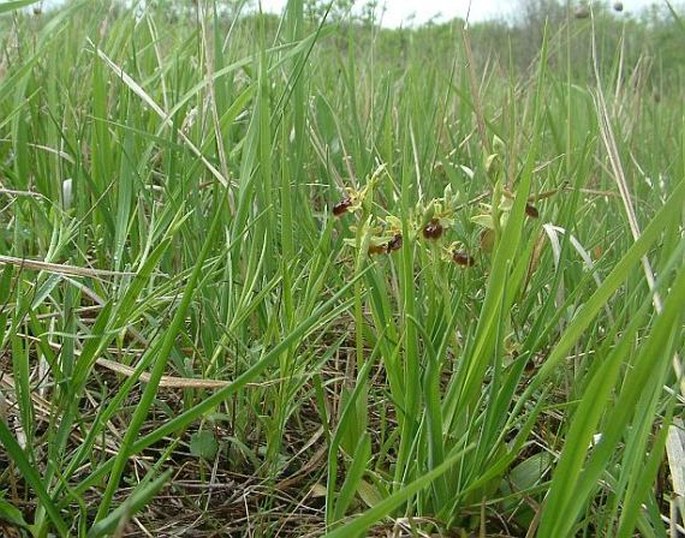Syn.: Arachnites aranifer (Huds.) Bubani, Myodium araniferum (Huds.) Salisb., Ophrys aranifera Huds., Ophrys arachnitiformis Gren. et Phillippe, Ophrys fucifera Curt.
Family: Orchidaceae Juss.


Distribution: Mediterranean and southern regions of Central Europe – England, Belgium, Germany, Austria, Slovakia, Hungary, Ukraine and Caucasus (subsp. taurica).
Ecology: It grows in meadows, pastures, forest margins, in dry calcareous soils, in lowlands. Blooms from April to May.
Description: A perennial herb with an erect stem, 15–40 cm tall. Basal leaves in a rosette, yellowish-green. Inflorescence lax, flowers 2–9, perianth-segments glabrous, rarely papillose, outer 6–10(–12) mm, oblong-ovate to -lanceolate, more or less obtuse, green, rarely purplish or whitish, inner perianth-segments 4–8 mm, at least 1/2 as long as the outer and usually narrower, oblong-triangular to -lanceolate, green, greenish-purple or brownish-red, 1–3-veined, usually with undulate margin; labellum with margins deflexed or flattened, orbicular to ovate, speculum usually H-shaped, bluish-violet or blackish-purple. The fruit is a capsule.
Threat and protection: The Early Spider Orchid is a strictly protected plant in Great Britain, Hungary, Slovakia and Serbia, also is protected by the Convention on International Trade in Endangered Species of Wild Fauna and Flora (CITES).



These images were taken in Southern Slovakia, hill Vŕšok (May 6, 2004).


